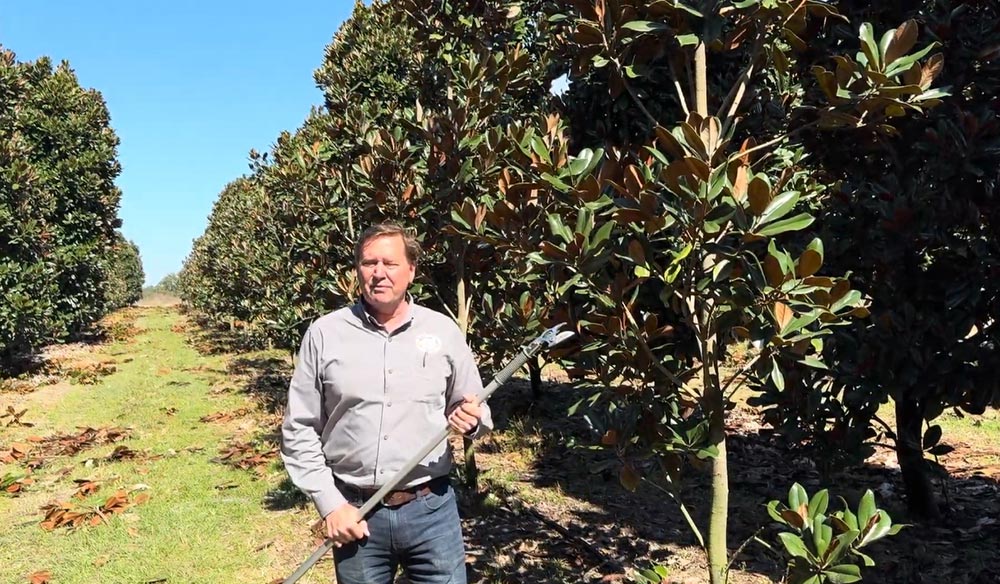|

The Magnolia Company Mary's Magnolias
| |||||

|
| ||||
January 23rd, 2025
Magnolia trees are renowned for their stunning blooms and graceful branches, adding noble beauty and charm to any landscape. We love them so much that we built a whole business around them!
However, like all living things, magnolias need and deserve some TLC from time to time. Regular maintenance, including corrective pruning, is an important part of their care.
Think of pruning like getting a haircut – sure, you can go weeks, months, even years without a haircut and be perfectly fine. But, do you really want to? It’s one of the many ways we take care of ourselves, and magnolia pruning is no different.
From our farms in Central Florida to your front yard, here’s our best advice on when, how, why, and what you’ll need to give your magnolia trees the top of the line care they deserve.

Timing is key when it comes to corrective pruning for magnolia trees. Ideally, you should prune during the dormant season in late winter or early spring to minimize stress on the tree. Signs that indicate the need for corrective pruning include overgrown branches, rubbing limbs, and the presence of dead or diseased wood.
It’s easy to forget – removing parts of a plant is a stressful event for the plant. By pruning during the magnolia tree’s dormant season, you’re setting the tree up for a speedy and easy recovery. It’s like when people undergo significant surgical procedures; it’s a lot easier to have the procedure done when you’re put under anesthesia (a state of dormancy) for it.
That said, if damage occurs to your tree at any point in the year, prune the branch. In most instances, the tree should be just fine.
Simply reserve your thorough, more invasive pruning for the tree’s dormant season, just before its springtime growth spurt.
To perform corrective pruning effectively, you’ll need the right tools and techniques.
Suggested tools for pruning, depending on the size of your tree:
When making cuts, it’s important to follow proper pruning techniques. When cutting, make sure to cut just outside the branch collar to promote healing and prevent disease.
While corrective pruning can address many issues, some challenges may require special attention. For example, dealing with large branches may require additional tools and techniques, such as making strategic relief cuts before removing the branch entirely. You may want to phone a friend for help with larger endeavors.
Additionally, correct vertical growth or water sprouts through selective pruning to encourage more horizontal branching.
Going back to our surgery analogy, postoperative care is important! After completing corrective pruning, it’s essential to provide proper care to promote tree recovery and new growth.
We recommend applying a layer of mulch around the base of the tree to retain moisture and suppress weeds. Consider fertilizing the tree to provide essential nutrients for healthy growth, especially as the tree comes out of its dormant season. Monitor the tree closely for signs of stress or disease, and provide additional care as needed.
As professional magnolia farmers, we’re always here to answer your questions. So, if you run into a situation you’re unsure of, please, reach out! You can contact our expert growing team through phone, email, and social media. We even have a Facebook page dedicated to building a plant lover community and providing support to our fellow green thumb growers.
Are you pruning your magnolia this season? Share your photos with us, and happy growing!
| |||||

|
| ||||